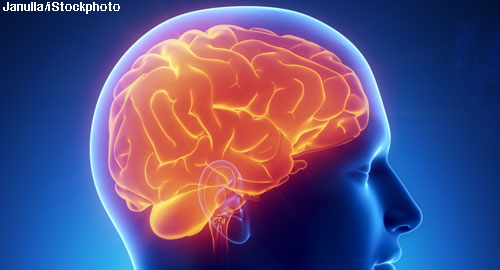 Patients with fibromyalgia often have cognitive dysfunction that appears to result from a reduced capacity to maintain the endogenous level of brain activation necessary to perform a task. This deficiency can be particularly obvious when attentional demands are increased, suggesting that patients with fibromyalgia have a reduced ability to filter distracting information. The combination of impaired sustained attention and reduced processing speed can, therefore, compromise cognitive performance in this patient population. Although these observations have been made in multiple studies, the underlying mechanisms behind the cognitive dysfunctions seen in fibromyalgia have not been well explained.
Patients with fibromyalgia often have cognitive dysfunction that appears to result from a reduced capacity to maintain the endogenous level of brain activation necessary to perform a task. This deficiency can be particularly obvious when attentional demands are increased, suggesting that patients with fibromyalgia have a reduced ability to filter distracting information. The combination of impaired sustained attention and reduced processing speed can, therefore, compromise cognitive performance in this patient population. Although these observations have been made in multiple studies, the underlying mechanisms behind the cognitive dysfunctions seen in fibromyalgia have not been well explained.
Researchers have investigated the ability of transcranial direct current stimulation (tDCS) over the dorsolateral prefrontal cortex (DLPFC) to modulate attention in patients with fibromyalgia. The approach has been effective, possibly because the DLPFC influences cognitive-executive control and the descendent pain modulation system. Adriana Ferreira Silva, a graduate student at the Federal University of Rio Grande do Sul in Brazil, and colleagues published the results of their investigation of tDCS over the DLPFC in patients with fibromyalgia and published the results online March 9 in Scientific Reports.1
The investigators tested the effects of a single, uniform dose of tDCS (anodal stimulation of 1 mA for 20 minutes) coupled with a go/no-go task in modulating alerting, orienting and executive attention indices. They randomly allocated 20 patients to the sequence sham-active group and another 20 to the sequence active-sham group. The researchers measured attention using the Attention Network Test. While acknowledging that this uniform dosage may not be optimal for all patients, the team notes that a single session of anodal tDCS over the left DLPFC had a modulatory effect on the orienting and executive attentional networks. They did not, however, see any effect on alertness.
The study also examined, as its secondary outcome, the effect of anodal tDCS over left DLPFC on heat pain threshold and heat pain tolerance. The investigators found that active tDCS increased heat pain threshold as compared with sham and heat pain tolerance. They then sought to better understand the relationship of Attention Network Test scores with pain measures. When the researchers performed a regression analysis, they found the effect on executive attention appeared to be largely independent of the effect on pain. This was true even though tDCS influences pain and attention in fibromyalgia.
Taken together, the research suggests that both DLPFC and primary motor cortex may be important targets for neurostimulation, particularly for patients who do not respond adequately to standard neurostimulation therapies.

